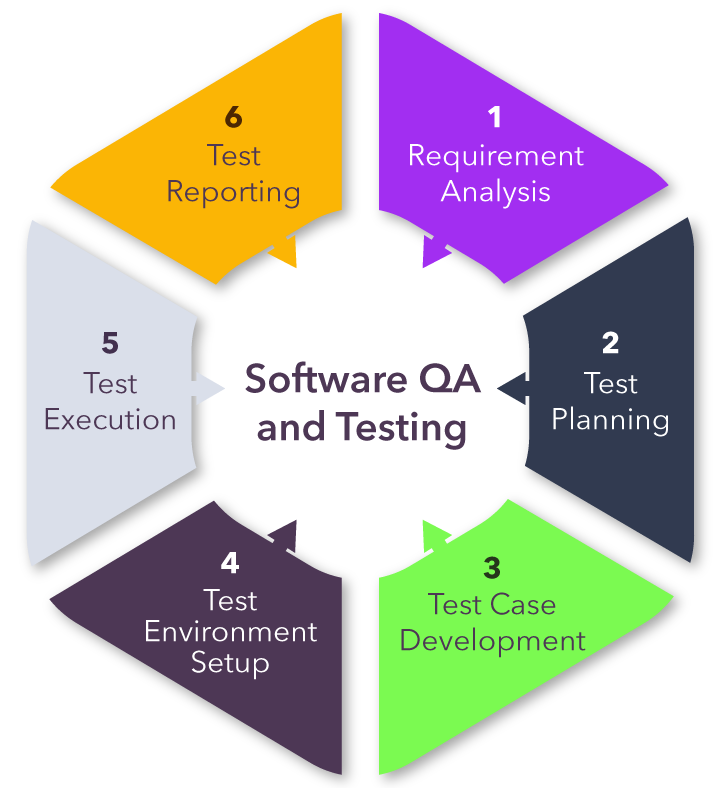5 Hot Trends that Point to the Future of QA

Quality is key to a product’s success. If a software program has a bug and is unreliable, or just doesn’t perform to the standards expected of it, it isn’t going to last long. And it’s going to be costly for your business organization. A recent CISQ report found that the cost of poor quality software in the US alone was around $2.84 trillion in 2018 - that’s over 10% of national GDP!
This is why testing software is so important, and why we’ve already written here that Quality Assurance (QA) engineers are the unsung heroes of software development. But the way we think about QA is also changing. It’s no longer just about finding and resolving defects in software products, a necessary testing function but often kept separate from core processes and development teams. QA today is increasingly viewed as something that is fully integrated into the software development life cycle, from design to delivery. At the same time, QA engineers have gone from playing second fiddle to orchestrating the control of quality throughout the organization.

This evolution of QA goes hand in hand with the growing popularity of Agile and DevOps, where software is being developed and test-run simultaneously. And the accelerated digital transformation triggered by the Covid-19 pandemic will only increase the adoption of these concepts.
According to The World Quality Report (WQR) 2020-21, which is based on over 1,750 interviews of CIOs, CTOs, QA leaders, and other IT decision-makers, the gap between those who code and those who test is narrowing as QA functions become increasingly integrated into the development cycle. Tellingly, for the second year running, WQR survey respondents said that ‘business assurance’ (contributing to business growth and positive outcomes) was considered the main critical objective of QA, ahead of finding defects before a product goes live.
Here are some other key trends in QA and software testing that we think are important to follow.
Automated Testing As Standard
Automated testing can save money and time, especially on large projects that involve many repetitive procedures. It also offers enhanced reporting capabilities, which any experienced QA engineer will tell you is just as important as discovering bugs. Automation is nothing new in QA, but a squeeze on budget resources and the search for “high quality at fast speed” means it is now considered essential rather than a nice benefit. The search for greater efficiency under Agile principles is also driving efforts to optimize the automated testing framework. For example, one recent innovation is the emergence of scriptless automated testing, which supports fast scalability by reducing the among of coding required in test frameworks. Of course, no testing framework can be fully automated (yet): a manual approach remains crucial for exploratory tests and as a way to gauge the true human user experience of new software. That is why a vital skill for senior QA engineers is knowing which balance of automated and manual testing is right for a specific project.
AI and ML in QA
Artificial intelligence (AI) and machine learning (ML) will have a growing influence on all aspects of software development over the coming years, with QA no exception. On the one hand, QA engineers will need to adapt to test AI functionality and security as it is incorporated into the software. On the other, AI and ML can be used to enhance QA itself by taking automated testing to another level. AI can be used to prioritize test cases, predict the quality of a testing framework, classify and report bugs, and even write new tests. We’re also just starting to explore the possibilities of AI in software testing, but good QA engineers will keep an open mind and be ready to learn new techniques and skills for an AI-world.
QA Engineers as Enablers
We’ve already seen how QA has gone from being viewed simply as an independent testing function to becoming an integral part of software development. According to the WQR, the next phase in this evolution is for QA to become an inclusive function, whereby all development teams incorporate QA thinking - and testing - into their operations. The WQR recommends QA team members lead the culture shift by educating colleagues on techniques and tools while making quality-related metrics available to all via dashboards. The goal is to bake QA principles into the entire development process and the minds of all those involved in it.
QA in Cybersecurity
Again, tests for IT security have been going on for years, but they’ve arguably never been so important. The sudden shift to work-from-home (WFH) this year has made cybersecurity a more pressing issue for organizations, especially those that didn’t have well-established security systems in place before the pandemic hit. An effective QA testing process is key to setting up a secure IT system in a world where remote working becomes the norm - you can use it to find (and fix) your organization’s weak spots before someone else does. By conducting regular penetration tests (that hopefully show a 100% secure system), you can also use QA as a tool to boost your businesses’ reputation when it comes to security. As more aspects of our lives shift from analog to digital, high-quality cybersecurity will be increasingly important for all organizations.
IoT Testing
The Internet of Things (IoT) network is growing rapidly, and the roll-out of 5G will only accelerate the shift to a more interconnected, online world. This will place further demands on QA, as the combinations of elements to be tested between new IoT devices, platforms, protocols, and operating systems grow exponentially. IoT testing will need to focus on security, usability, compatibility, data flow, and overall performance. These new demands will again drive advances in QA testing tools and frameworks over the coming years.
Here at Jobsity we take QA very seriously and make sure our experience QA engineers are involved from the very start of a new software project to ensure high performance is delivered throughout. Our teams are looking forward to seeing how these hot QA trends develop and are ready to help your organization set new quality standards and thrive in the future.
--
If you want to stay up to date with all the new content we publish on our blog, share your email and hit the subscribe button.
Also, feel free to browse through the other sections of the blog where you can find many other amazing articles on: Programming, IT, Outsourcing, and even Management.

Mauricio has been at the forefront of technology for +15 years. He is constantly integrating new technologies including frameworks, CMS, and standard industry models. He is a pragmatic problem-solver and customizes solutions based on the best schema/language/application for each project. As the CTO at Jobsity, he ensures that his team is always up to date with the latest advances in software development by researching the software ecosystem, implementing professional development initiatives, and coordinating with new and existing clients about their needs.